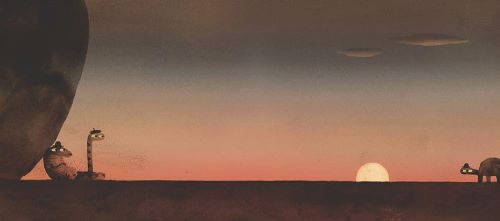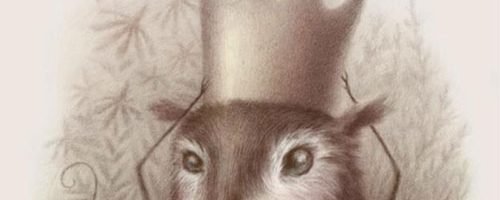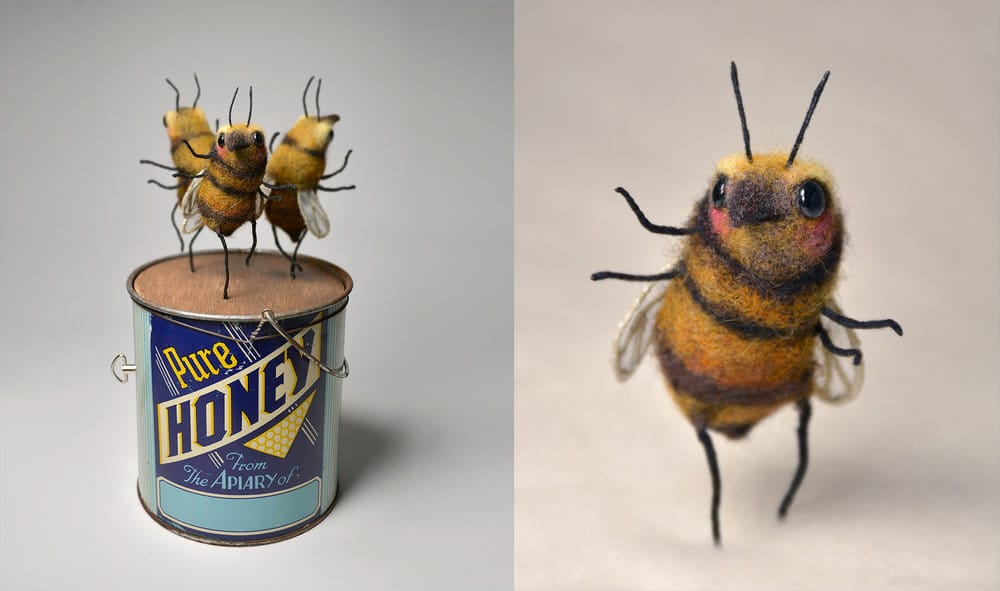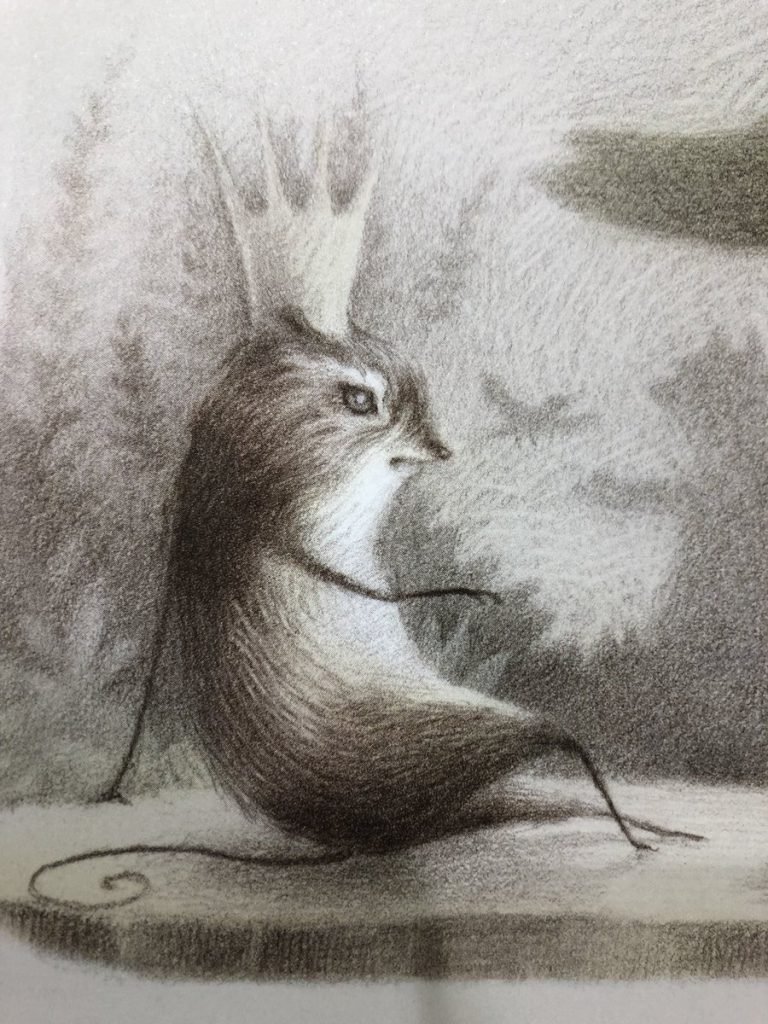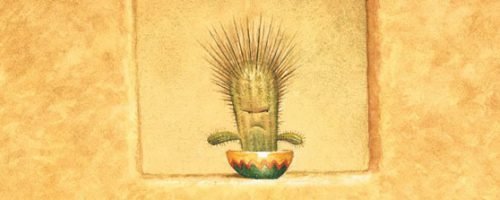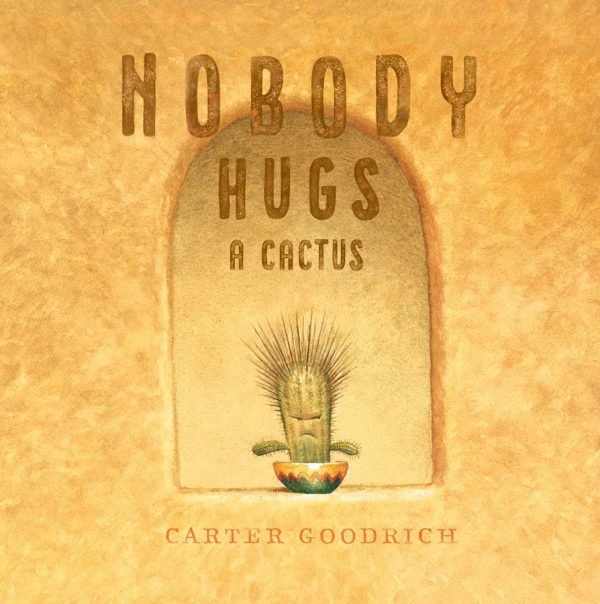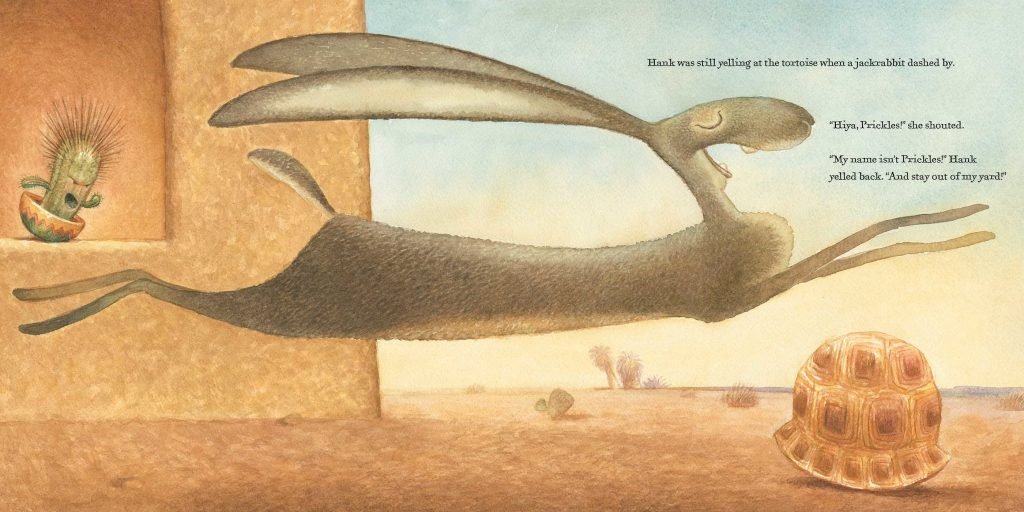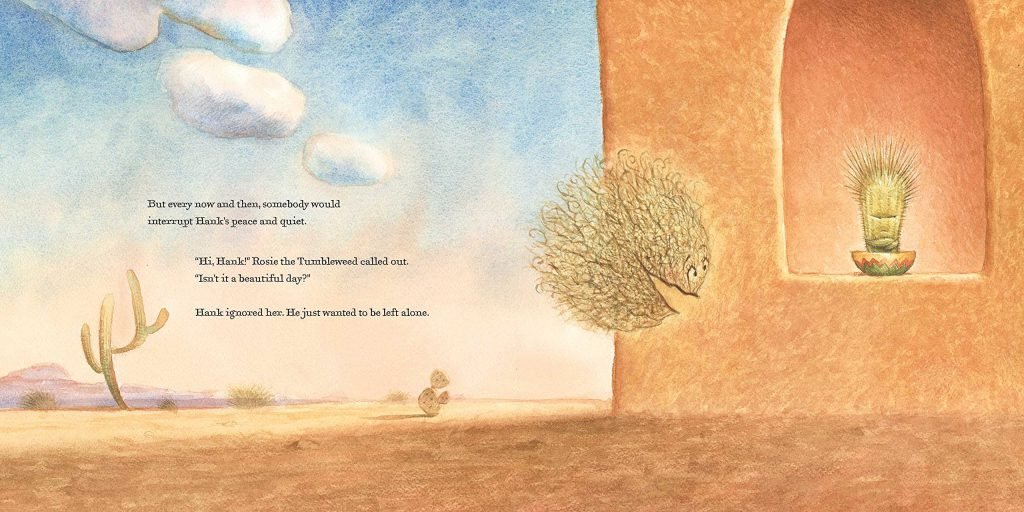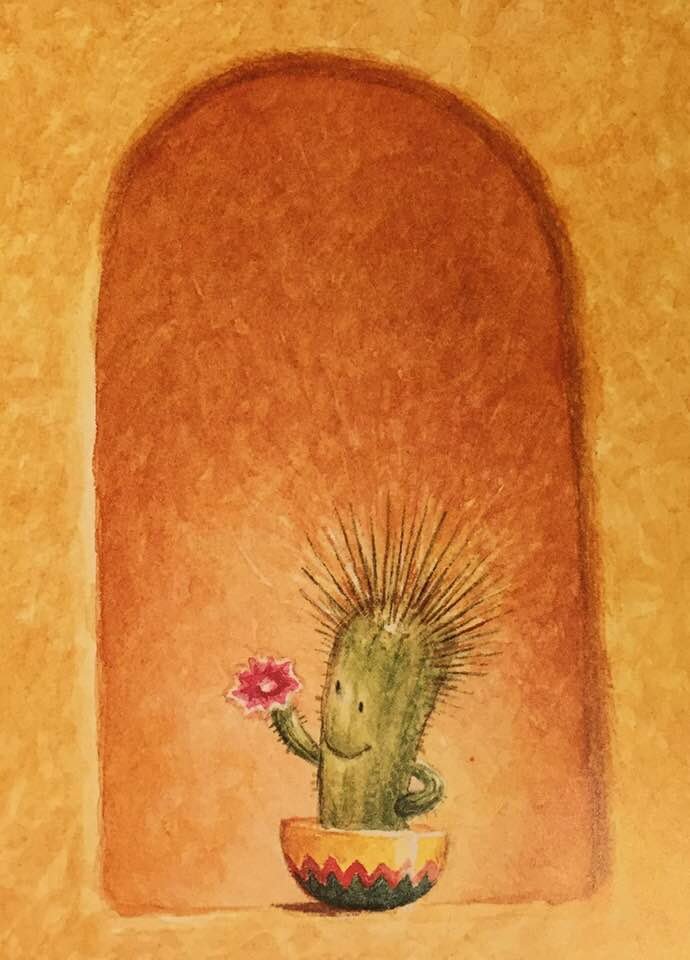The Rock from the Sky is loopy, seriously loopy, and it is Jon Klassen’s best book.
With his usual, but elevated signature qualities – the desert dry humour, the entirely original and occasionally subversive storytelling, the shifty-eyed critters – The Rock from the Sky is the Apotheosis of Klassen.
A huge rock, perhaps an asteroid, figures into each of the five short but interrelated stories. Sometimes it acts as a prop, sometimes as a looming, ominous presence, and in one singular instance, a deliverer of salvation. A sense of doom permeates the book, but kid-level doom along similar lines as Wile. E. Coyote’s anvil of fate. As readers, we are delightfully in on all of the drama even if the characters are not. This is one of the many joys of The Rock from the Sky.
And it’s not just The Rock the characters – a turtle, a weasel, and a snake – must contend with. There is also the alien – an eyeball on stilts that shoots death rays at flowers, resembles the tripods in H.G. Wells’ The War of the Worlds (with a nod to the symbolist art of Odilon Redon), and like The Rock, has an altogether unexplained provenance. All of Klassen’s books tend to have an otherworldly quality, but when you add an alien, you’ve got science fiction. It’s unexpected and laugh out loud funny.
Characters in Klassen’s books contemplate their predicaments. They ponder, sometimes over several pages. Movement is economical, words are sparse, senses are heightened but not frenetic, occupying a kind of slow world with spurts of weird, often existential drama. In The Rock from the Sky, a sense of community and the need for connection weaves gently through the book, albeit at Klassen’s familiar low-key vibe. Wanting to be heard gets several characters out of harm’s way. A negotiation, a little movement to the left or right, makes all the difference.
The illustrations mirror this understated approach, although each page is quietly beautiful. Rendered digitally and in watercolour, there is much to love here, from the artful use of subdued and speckled earth tones (the ever-shifting skies are particularly impressive) to the simple, hilariously expressive characters, all of whom sport (yes!) hats and a set of eyeballs that somehow convey suspicion, alarm, and obliviousness in equal measure. The alien is its own kind of eyeball, wreaking havoc on the otherwise bucolic landscape.
I purposely did not read any reviews of The Rock from the Sky, nor did I read it in the shop where I picked it up. Longer than his usual books, I wanted to savour the experience, and I was not disappointed. Like all of Klassen’s books, the apparent simplicity belies a very calculated design, both in words and art, but it never looks laboured. Particularly in his self-authored books, the illustrations do much of the storytelling, and this is true of The Rock from the Sky, which could easily be wordless. We know what the characters are thinking because of the precise placement of their pupils. There is nothing extraneous, even in the landscapes, which have just enough gorgeous detail to swoon over, including several flowers which fall victim to the rock and the alien, respectively. This still makes me laugh, even after multiple readings.
I’ve loved all of Jon Klassen’s books, including those where he just illustrates the cover, like the beautiful Pax, by Sara Pennypacker and The Nest, by fellow Canadian Kenneth Oppel. The Rock from the Sky is my favourite because it is both more of the same, and an escalation. It’s funnier, stranger, and (impossibly) more lovely than his other books. It touches on fate and serendipity, but also the pleasures of silliness, imagination, and shared experiences. In Klassen’s world, life is always a little messy and unpredictable, but it is never dull.
I won’t lie, I am ridiculously proud of the fact that one of the world’s best children’s picture book illustrators is Canadian, even if he now calls California home. Born in Winnipeg, Klassen is the 2013 winner of the Caldecott Medal in Illustration for This is Not My Hat (which also received the Kate Greenaway Medal), as well as two Caldecott Honors (for Sam and Dave Dig a Hole and Extra Yarn). In 2009, he received Canada’s highest honour, the Governor General’s Award for Cats’ Night Out, and in 2018, he was appointed a Member of the Order of Canada for his transformative contributions to children’s literature as an illustrator and author.
The Rock from the Sky is published by Candlewick Press, 2021. Note: I picked this up at The Prints and the Paper in Edmonton, Alberta. Please support local.
Other Jon Klassen books reviewed in this blog:
House Held Up by Trees (written by Ted Kooser, Candlewick Press, 2011)
I Want My Hat Back (Candlewick Press, 2011)
This is Not My Hat (Candlewick Press, 2012)
The Dark (written by Lemony Snicket, HarperCollins, 2013)
Sam and Dave Dig a Hole – mini-review (written by Mac Barnett, Candlewick Press, 2014)


